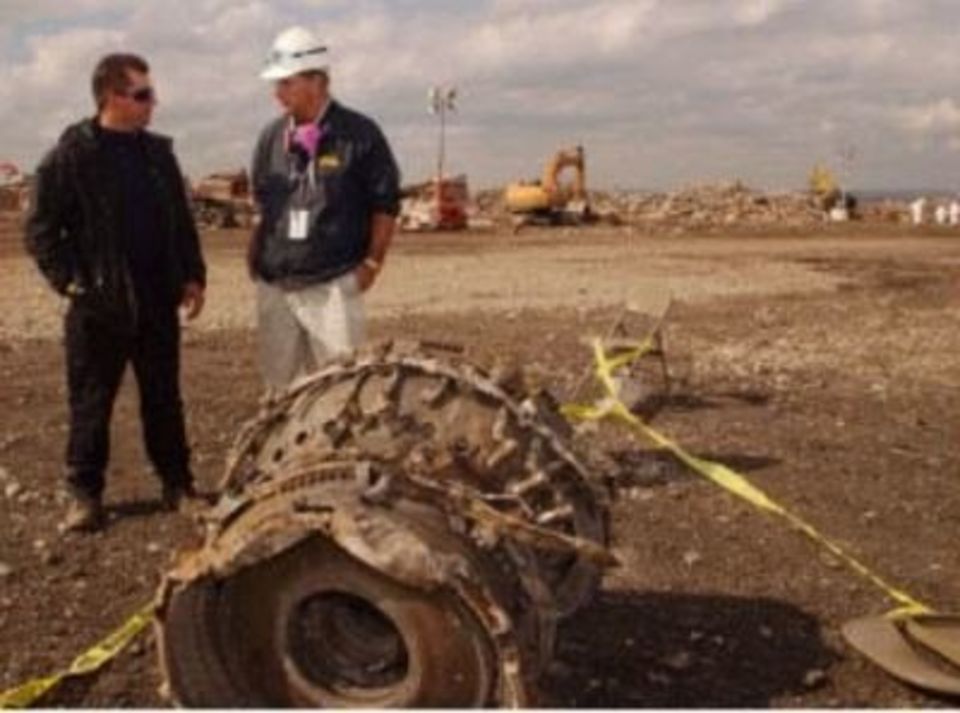Kathryn Carse Staten Island Advance
STATEN ISLAND, N.Y. — Some 13 years after the operation was shut down, retired NYPD Lt. Frank Marra has written From Landfill to Hallowed Ground, an account of his time overseeing the vehicle impound at the Fresh Kills Landfill after September 11, 2001.
His observations provide details of policing of what was both the world’s largest crime scene and a spiritual place.
“They were things I had put dormant for years,” said Marra, a Westerleigh native and Islander at the time.
He was assigned from Brooklyn South Gang Unit to manage the vehicle impound where a few hundred cars and trucks were received at the recently closed landfill that was reopened to receive 1.2 million tons of debris after the destruction of the Twin Towers.
“It was therapeutic [to write the book] which may be selfish, but hopefully it will give those that lost people an opportunity to look passed that day and see what happened behind the scenes at the landfill which got zero publicity,” added Marra in a phone interview from his home in Millstone, N.J. where he lives with his wife and three sons.
As the process moves forward to create a memorial at Freshkills Park, Mara’s account provides an insight into the respect and care present from the beginning, ultimately helping to identify the remains of 1,634 of the 2,753 the 2001 terrorist attacks. However, identification has continued as recently as 2013.
The part that replayed in his head, he said, was the grief of the victims’ families.
“Seeing body parts was not new to us,” said Marra, who had 17 years with the police department. “I was more emotionally involved when victims’ families came to see the automobile or take a possession from it or to pick up a ring, a wallet, watch or bracelet.”
One of the most heartbreaking scenes he recounts is of a woman who arrives with her two children just to sit in her husband’s car for awhile. Weekend drives in the white Mercedes were happy family times, she told him. She puts a photo of him in the driver’s seat and leaves it there. When they leave, she leaves the photo and takes his briefcase and birthday presents he had for his daughter in the trunk.
One of the more gruesome was the remains of a person embedded in the hood of a truck.
“One thing I did know was that this crime scene, this landfill would be part of me for years to come,” writes Marra.
An incident that was widely reported after the book was published was the fleeting appearance of an African-American Red Cross worker, dressed in a World War II era uniform, carrying a tray with sandwiches and drinks. She would disappear as quickly as she was seen.
An aura reader, someone who gathers information through the energy surrounding a person, emailed Marra and said the Red Cross worker is a “soul collector.”
“She said a soul collector helps souls to the afterlife. The Red Cross worker wasn’t there to help the living; she was there to help those that died to show them the way,” said Marra.
He is among those who saw her, but only remembered it with a jolt when talking to a fellow crime scene detective while he was working on the book.
“It was not police relevant, not something you would make a log entry for, but the place was extremely spiritually exposed,” said Marra.
“In the tug-of-war scenario between fact and fiction that went on quite a bit,” he contributes the mystery of seven vending carts with no evidence of registration, food or supplies that were undamaged. The only person who tried to retrieve them could not establish ownership. The rumor was the owners were of Middle Eastern descent who knew about the attacks and were able to move to safety. Based on his experience, Marra is intrigued by all the questions he cannot answer.
FRESH KILLS LANDFILL TO FRESHKILLS PARK
Co-written with Maria Bellia Abbate, the telling is informal, sometimes retracing steps, as if he was sitting at your kitchen table over a week’s time to recount his memories. And it always comes back to the need for this to forever be “Hallowed Ground.”
What is missing is an official accounting of the plans which include a September 11 memorial to honor the dead and the recovery workers. The process is two-fold.
Fresh Kills Landfill had been closed as a garbage dump, and the Department of Sanitation had begun the engineering of its closure. That came to a halt in section 1/9 or what is known as West Park, the highest point in Fresh Kills Park, where all the material was taken to be screened and sifted and law enforcement investigations took place.
“Once the work started, a revised closure design plan restored proper drainage to the site. This involved the controlled process of placing six million cubic yards of clean fill to build strength and sustain the weight of the added fill to Section 1/9. This process is near completion,” said Kathy Dawkins, spokeswoman for DSNY in an emailed statement.
In addition to this work, Section 1/9’s final cover construction resumed last year. The Department completed final cover, stormwater controls and landfill gas collection and venting systems in an area of Section 1/9. Later this year in a different location of Section 1/9, the same type of work is scheduled to be completed.
“Total closure of Section 1/9 is planned to be completed in five years,” Dawkins said.
Public access is not possible until the closure is complete. At that time, the Parks Department will begin the design process of an earthwork monument that would include views of lower Manhattan.


